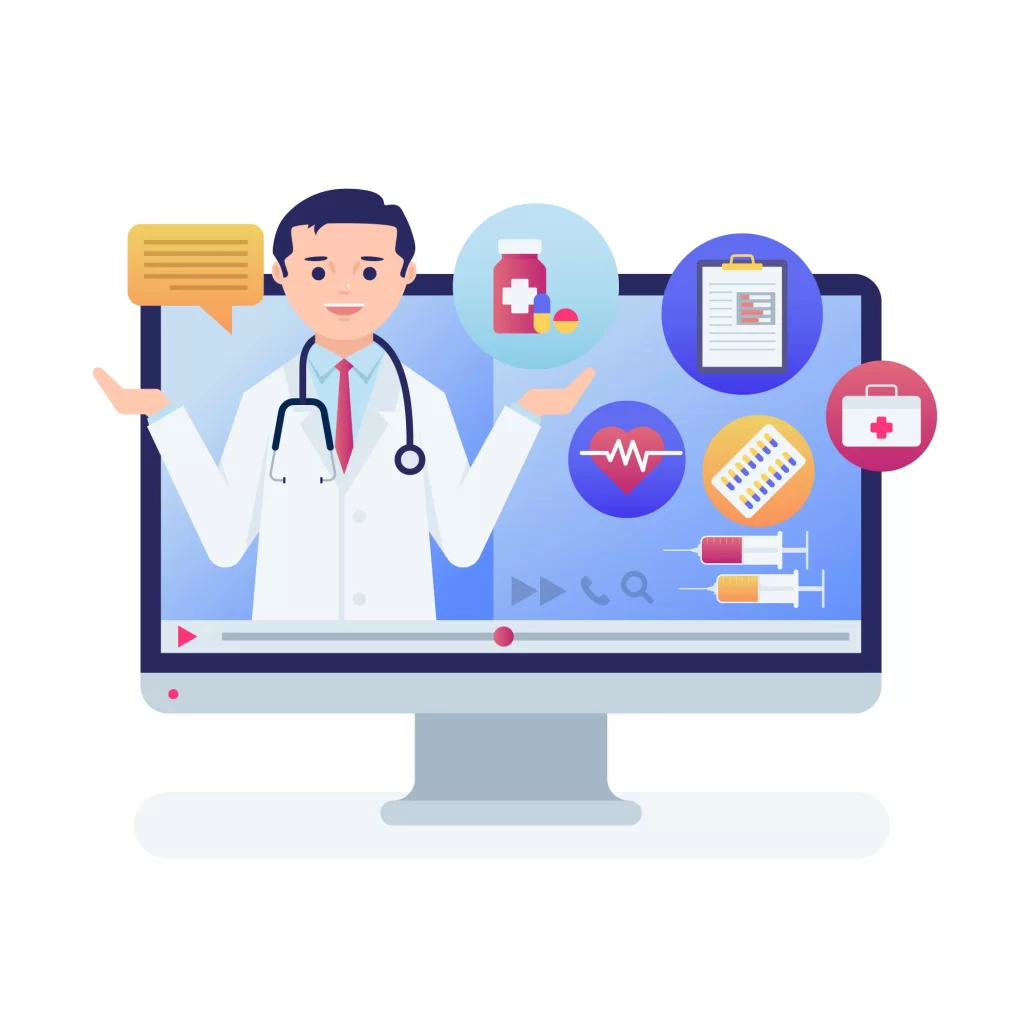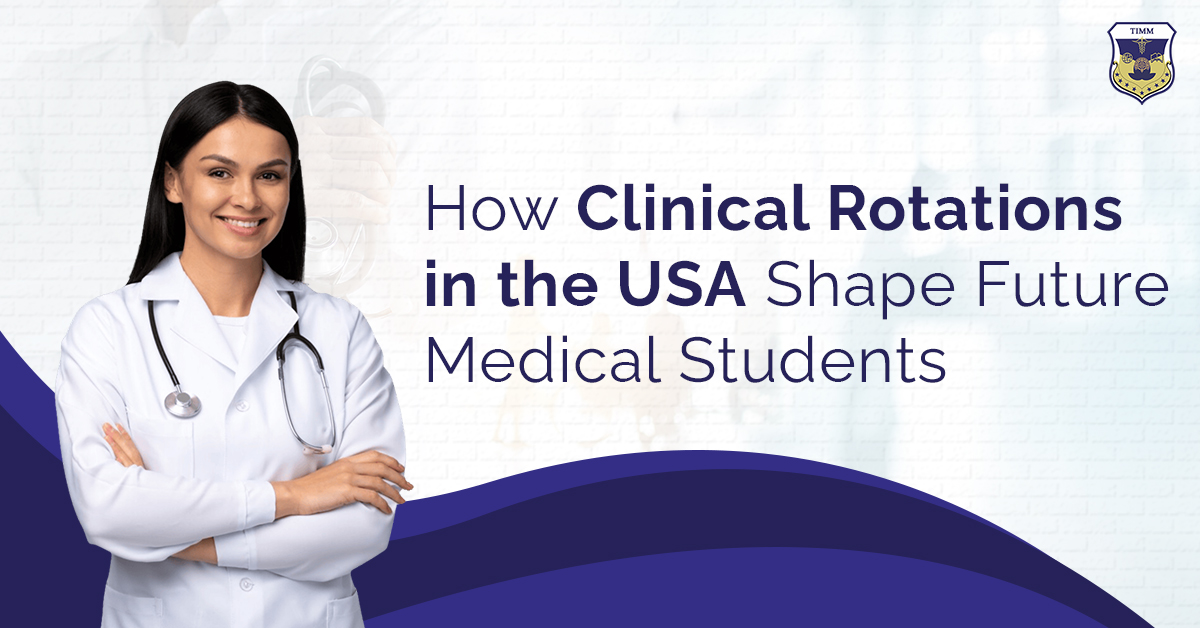|
|
Blog Summary
- Introduction to Clinical Rotations in the USA
- The Structure of Clinical Rotations
- Impact of USA Clinical Rotations on Future Medical Students
- Practical Application of Knowledge
- Development of Clinical Skills
- Exposure to Different Specialties
- Professionalism and Ethics
- Interdisciplinary Teamwork
- Building Relationships and Networking
- Understanding Healthcare Systems
- Stress Management and Resilience
- Clinical Rotations for International Students
- TEMS Residency Program for International Medical Graduates
- Conclusion
- FAQ
Introduction to Clinical Rotations in the USA
Clinical rotations in the USA are crucial for medical students, bridging classroom learning and practical patient care. During these rotations, students gain hands-on experience in various medical residency program settings, applying their theoretical knowledge in real-life scenarios. This phase is essential for developing clinical skills, decision-making abilities, and professional bedside manners.
With the guidance of experienced physicians, students learn to diagnose, treat, and manage patients effectively. The diverse experiences across different specialities help shape well-rounded, competent, and compassionate physicians.
Clinical rotations in the USA offer international medical students invaluable hands-on experience and exposure to diverse healthcare settings.
The Structure of Clinical Rotations
The Structure of Clinical Rotations involves a series of hands-on experiences in various medical settings. Students engage in real-life scenarios under the guidance of experienced physicians to develop clinical skills, decision-making abilities, and professional bedside manners.
This structured phase is crucial for medical students to apply theoretical knowledge across different specialities, shaping them into competent and compassionate physicians. Students rotate through various specialities, including.
- Internal medicine
- Surgery
- Pediatrics
- Psychiatry
- Obstetrics and Gynecology
- Family medicine, and more
Each rotation lasts several weeks to a few months, offering students a well-rounded exposure to different medical disciplines. This structure ensures that all medical students gain a broad understanding of the various medical fields, helping them make informed decisions about their future specialities.
Texila Education Management Services has been providing residency support in the USA since 2010. Its network includes ACGME hospitals in multiple locations, offering students hands-on training and potential pathways to residency programs in the USA.
Impact of USA Clinical Rotations on Future Medical Students
Clinical rotations in the USA profoundly impact medical students’ future, shaping them into competent and compassionate physicians. These rotations offer invaluable hands-on experience in diverse medical residency program specialities, allowing students to apply theoretical knowledge in real-world settings.

By interacting directly with patients, students develop crucial clinical skills, hone their diagnostic abilities, and learn to navigate complex healthcare scenarios under the guidance of experienced physicians.
Practical Application of Knowledge
Clinical rotations allow medical students to apply the theoretical knowledge gained during their preclinical years. This transition from classroom learning to real-world practice helps students understand how to diagnose and manage various medical conditions. Working with patients directly under the supervision of experienced physicians enables students to see firsthand the complexities of clinical decision-making and patient care.
Get inspiration from real-life success stories and case studies, which are shared in the content. Reflect on how other students overcame challenges during their rotations and apply those lessons to your journey.
Development of Clinical Skills
During rotations, students develop essential clinical skills, such as conducting physical examinations, taking patient histories, and performing medical procedures. These skills are vital for practising physicians and are honed through repeated practice and feedback from supervising doctors.
This practical experience is critical for developing future physicians’ competence and confidence. Students learn to interpret various diagnostic tests, including laboratory results, imaging studies, and electrocardiograms, enhancing their ability to make accurate diagnoses and formulate treatment plans.
Rotations allow students to work with interdisciplinary healthcare teams that include nurses, pharmacists, and allied health professionals. This encourages a collaborative approach to patient care and builds a comprehensive view of healthcare delivery.
Gaining proficiency in clinical skills during rotations is crucial for strengthening a residency application. This hands-on experience showcases a student’s readiness to excel in a residency program.
Exposure to Different Specialties
Clinical rotations expose medical students to various medical specialities, including internal medicine, surgery, paediatrics, obstetrics and gynaecology, psychiatry, and more. This exposure is critical for helping students decide on their future career paths.
By experiencing different fields of medicine, students can identify their interests and strengths, which guide their choices for residency and specialization.
Professionalism and Ethics
Clinical rotations instil a sense of professionalism and ethical behaviour in medical students. Interacting with patients and healthcare professionals in real-world settings teaches students the importance of empathy, communication, and ethical considerations in medical residency program practice. These experiences shape their professional identity and commitment to patient-centered care.
Interdisciplinary Teamwork
Modern healthcare relies heavily on interdisciplinary teamwork. Medical students work alongside nurses, physician assistants, pharmacists, and other healthcare professionals during clinical rotations.
This collaborative environment teaches students the value of teamwork, communication, and the roles of various team members in providing comprehensive patient care.
Building Relationships and Networking
Clinical rotations allow students to build relationships with mentors, peers, and other healthcare professionals. These connections can be invaluable for career development, mentorship, guidance, and potential job opportunities. Networking during rotations can also lead to letters of recommendation, which are crucial for residency applications.
For insights on navigating the next steps after passing the USMLE, be sure to read our blog, “Residency Program After USMLE Success“. It provides valuable guidance for securing a residency and advancing your medical career.
Understanding Healthcare Systems
Through rotations, students gain insights into the functioning of different healthcare systems and settings, such as hospitals, outpatient clinics, and community health centres.

Understanding how healthcare is delivered in various contexts helps students appreciate the challenges and intricacies of the medical field, including healthcare policies, administration, and resource management.
Stress Management and Resilience
The demanding nature of clinical rotations teaches students how to manage stress and build resilience. Balancing long hours, rigorous workloads, and emotional challenges prepares students for the realities of medical practice. Developing coping mechanisms and resilience during rotations is critical to avoiding burnout and ensuring long-term work satisfaction.
Clinical Rotations for International Students
International students face unique challenges and opportunities when pursuing clinical rotations in the USA. These students often need to secure rotations through various agencies or university affiliations. For many, this experience is their first exposure to the American healthcare system, offering a valuable perspective that can be advantageous when applying for residency programs.
1. Navigating the Application Process
2. Adapting to a New Healthcare Environment
3. Building a Professional Network
TEMS Residency Program for International Medical Graduates
If you’re a recent graduate or medical student from abroad navigating the complexities of applying to residency programs, look no further than TEMS (Texila Education Management Services). We specialize in guiding you through every step of the process, ensuring you meet the essential US Clinical Experience requirement.
Gain access to a wide network of ACGME-recognized teaching hospitals and clinical sites, crucial for practical experience. Our program also includes vital letters of recommendation to bolster your residency applications. Benefit from personalized clinical training under experienced preceptors, ensuring a smooth integration into the US healthcare system.
Conclusion
Clinical rotations in the USA are a transformative experience for medical students, providing them with essential clinical skills, professional development, and networking opportunities. For international students, these rotations are a gateway to understanding the American healthcare system and enhancing their chances of securing residency programs in the USA.
Despite the challenges, clinical rotations have immense benefits. They shape the future of aspiring medical residency program professionals and prepare them for successful careers in medicine. Whether through hands-on experience, mentorship, or networking, clinical rotations lay the foundation for a rewarding medical journey.


